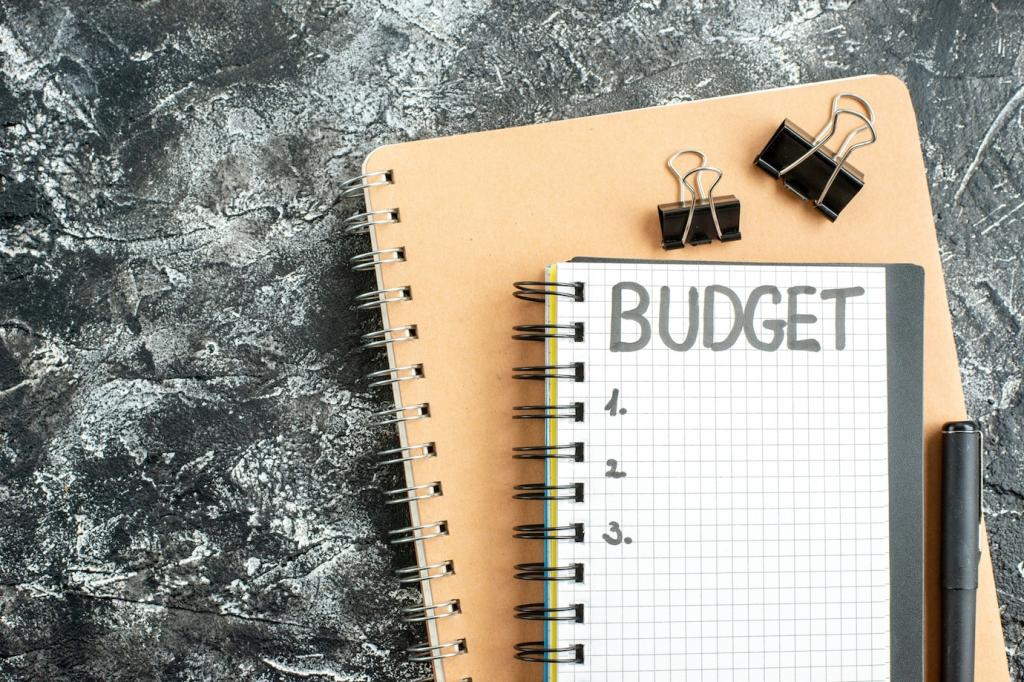
Steps to Build an Emergency Fund When Freelancing
Chosen theme: Steps to Build an Emergency Fund When Freelancing. Welcome, independent creators and self-starters! Today we’ll map a simple, dependable path to build your safety cushion—so dry spells, late invoices, and surprise expenses never derail your momentum.


Why an Emergency Fund Is Your Freelance Safety Net
Freelancing pays in waves, not a paycheck rhythm. Delayed invoices and seasonal slowdowns happen, even to seasoned pros. A dedicated emergency fund smooths those waves, protecting rent, essentials, and your creative focus when cash flow dips.
Why an Emergency Fund Is Your Freelance Safety Net
Aim for three to six months of essential expenses as a baseline, and consider six to twelve months if your projects are sporadic. Essentials include housing, food, utilities, minimum debt, insurance, and the tools that keep you working.
Export bank and card statements, tag every transaction, and separate needs from nice-to-haves. Patterns pop quickly over three months, revealing your true essentials and the lean monthly number your emergency fund must reliably support.
Step 1: Know Your Baseline
Open distinct accounts for business income and personal spending. Separation turns chaos into clarity, simplifies taxes, and ensures your emergency fund calculation includes both life necessities and the minimal tools required to keep serving clients.
Step 1: Know Your Baseline
Step 2: Set a Clear Target and Timeline
Calculate Your Number
Multiply your essential monthly expenses by your chosen runway—start with three months, stretch to six or more as confidence grows. Include taxes, insurance premiums, and any subscriptions that directly enable client work continuity.
Break It into Milestones
Divide the goal into quarters: 25%, 50%, 75%, 100%. Each checkpoint earns a small, budget-friendly celebration. Milestones make progress visible and motivating, especially during busy seasons when saving consistency quietly compounds.
Make It Visible
Use a simple dashboard, a whiteboard tracker, or an app widget. Seeing the number climb trains your brain to protect it. Share your target in the comments for accountability, and invite a friend to join you.
Step 3: Automate Contributions from Irregular Income
Direct a fixed percentage of each payment—say 10–30%—to your emergency fund the moment an invoice clears. Percentages flex with income, keeping you committed during feast months without overstraining during leaner stretches.
Step 3: Automate Contributions from Irregular Income
Set an automatic transfer for the same day income arrives. Treat it like a non-negotiable bill to yourself. Automation removes willpower from the equation and protects your future before discretionary spending tempts you.

Step 4: Protect and Park the Money

Open a Dedicated High-Yield Account
Keep your emergency fund in a separate high-yield savings account, not invested in volatile assets. You want FDIC/FSCS insurance, instant or next-day access, and a small yield that rewards patience while you build.

Define Clear Withdrawal Rules
Emergencies are sudden income loss, medical needs, critical repairs, or vital tools failing. They are not vacations, courses, or new gear. Write your rules, share them with a peer, and commit to replenishing after any withdrawal.

Name Your Account for Motivation
Label it “Freelance Safety Net” or “Six Months of Calm.” Behavioral research shows naming goals strengthens follow-through. Comment with your account name idea and inspire another freelancer to start theirs today.

Capture Windfalls and One-Offs
Tax refunds, referral bonuses, leftover project deposits, and unexpected royalties are perfect fuel. Decide now that 50–100% of windfalls flow straight into the fund, so you never debate when the money arrives unexpectedly.

Improve Cash Flow with Policies
Adopt deposits, milestone billing, and late-fee clauses. Shorten payment terms to net-15 where possible. Healthier cash flow means more consistent contributions, fewer scares, and a growing cushion that supports thoughtful, values-aligned client choices.

Seasonal Sprints
Plan short, focused pushes during high-demand months. Offer limited availability or bundles to existing clients, not discounts. Announce your sprint in our comments, then report back with results to motivate the community and yourself.


Step 6: Maintain, Replenish, and Reassess
Review expenses, update your target, and adjust your percentage if rates changed or new subscriptions were added. A fifteen-minute quarterly check prevents drift and keeps your safety net aligned with reality, not memory.
Step 6: Maintain, Replenish, and Reassess
If you tap the fund, switch to a temporary higher percentage until you refill it. Treat replenishment like a project sprint with a clear deadline. Share your rebuild plan below; accountability makes the bounce-back quicker.
